The Appian Way, or Via Appia Antica, is one of the oldest and most significant roads in the world, often referred to as the “Queen of Roads.” Stretching from Rome to the southern regions of Italy, this ancient path is proof of the brilliance of Roman engineering. Walking along the Appian Way is not just a journey through time but an immersive experience where past and present converge, offering travelers a unique glimpse into Rome’s rich heritage.
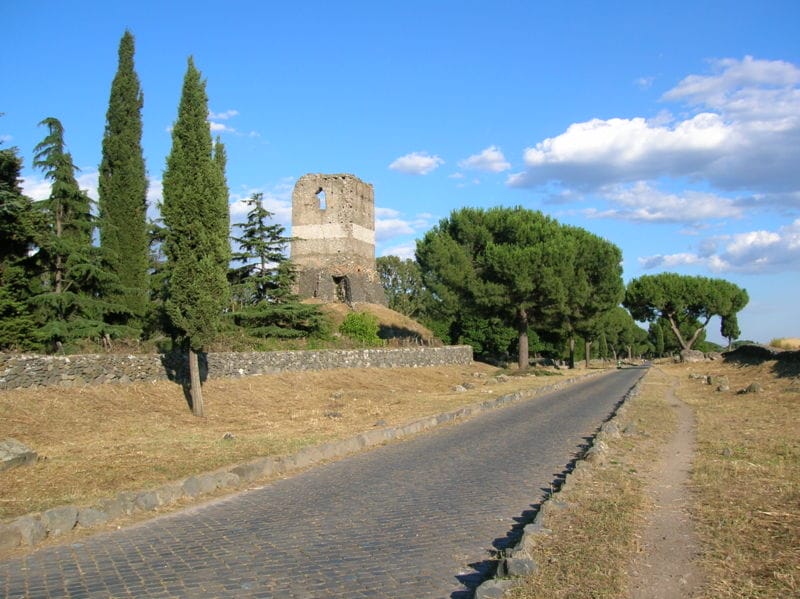
Key Takeaways
- The Appian Way, built in 312 BC, was crucial to the expansion of the Roman Empire, serving as a military and commercial route.
- The Appian Way offers stunning views of the Roman countryside, blending history with nature.
- The Appian Way is not only a historical route but also a place of deep cultural and spiritual significance.
History of the Appian Way
Built in 312 BC by the Roman censor Appius Claudius Caecus, the road was initially constructed as a military route to aid in the Roman conquest of Southern Italy. Over time, it became a vital commercial route, facilitating trade and travel between Rome and its distant colonies. The Appian Way played a crucial role in the expansion of the Roman Empire and has witnessed countless historical events, from the march of armies to the processions of saints.
Must-See and Must-Visit Places Along the Appian Way
Porta San Sebastiano and the Aurelian Walls
The journey along the Appian Way begins at Porta San Sebastiano, the grand gateway of the Aurelian Walls. This massive structure, originally known as the Porta Appia, was constructed in the 3rd century AD and remains one of the best-preserved gates in Rome. The Aurelian Walls, built to protect the city from invaders, offer a fascinating glimpse into Rome’s defensive architecture.
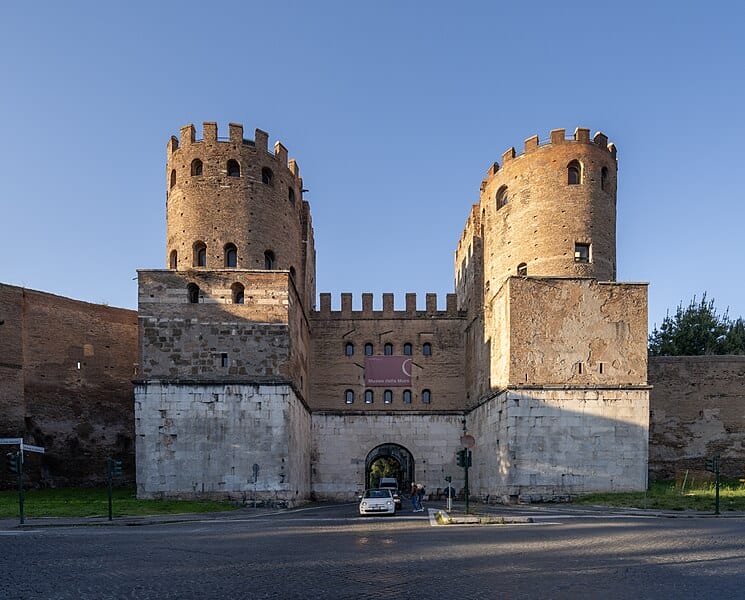
Source: Ardeatino, CC BY 4.0 https://creativecommons.org/licenses/by/4.0, via Wikimedia Commons
Traveler Tip: Many visitors recommend starting the walk early in the morning to avoid the midday crowds and fully appreciate the quiet grandeur of this historic entrance.
The Tomb of Cecilia Metella
One of the most iconic landmarks along the Appian Way is the Tomb of Cecilia Metella, a massive cylindrical mausoleum dating back to the 1st century BC. Cecilia Metella was a noblewoman from a prominent Roman family, and her tomb is a striking example of ancient Roman funerary architecture. The tomb’s imposing presence, with its fortress-like appearance, has captured the imagination of travelers for centuries.
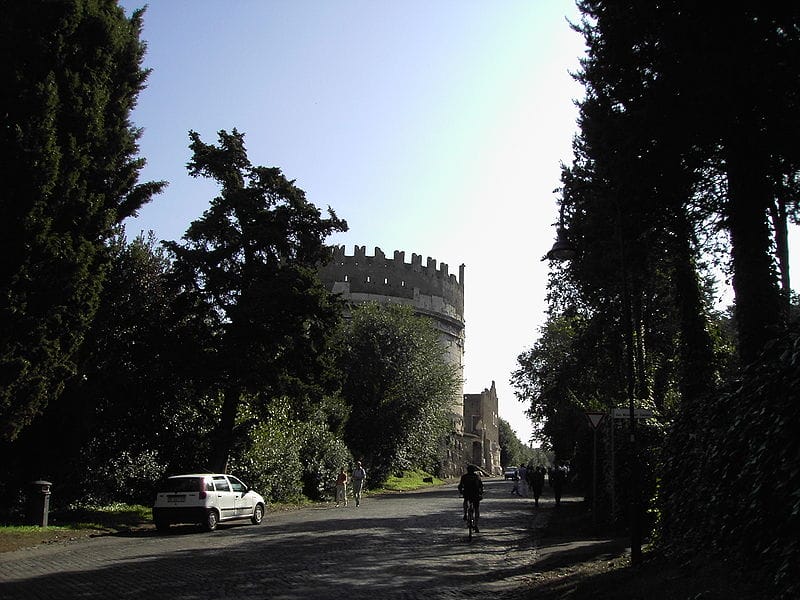
Traveler Experience: The tomb’s interior is relatively sparse, but the surrounding views are breathtaking. Visitors suggest spending time exploring the nearby ruins and enjoying the panoramic vistas of the Roman countryside.
The Catacombs of San Callisto and San Sebastiano
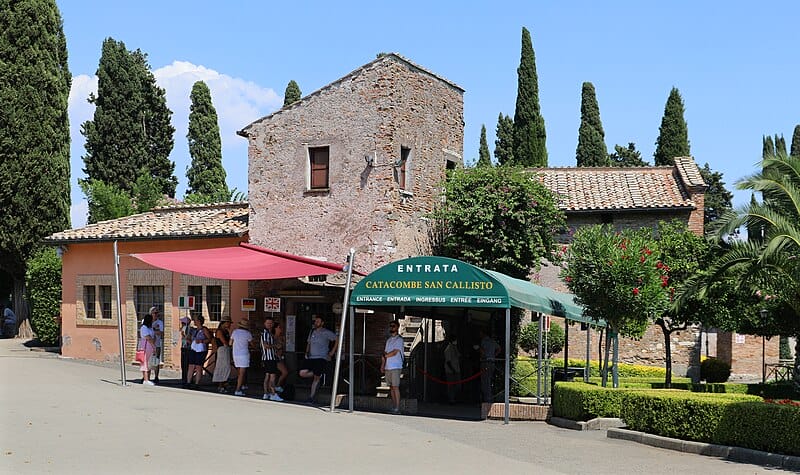
Source: Sailko, CC BY 3.0 https://creativecommons.org/licenses/by/3.0, via Wikimedia Commons
The Appian Way is home to some of the most important Christian catacombs in Rome. The Catacombs of San Callisto and San Sebastiano are particularly noteworthy, offering a glimpse into early Christian burial practices. The Catacombs of San Callisto, established in the 2nd century AD, were the final resting place for many early popes and martyrs. The Catacombs of San Sebastiano, named after the martyred saint, are equally significant, with intricate frescoes and inscriptions.
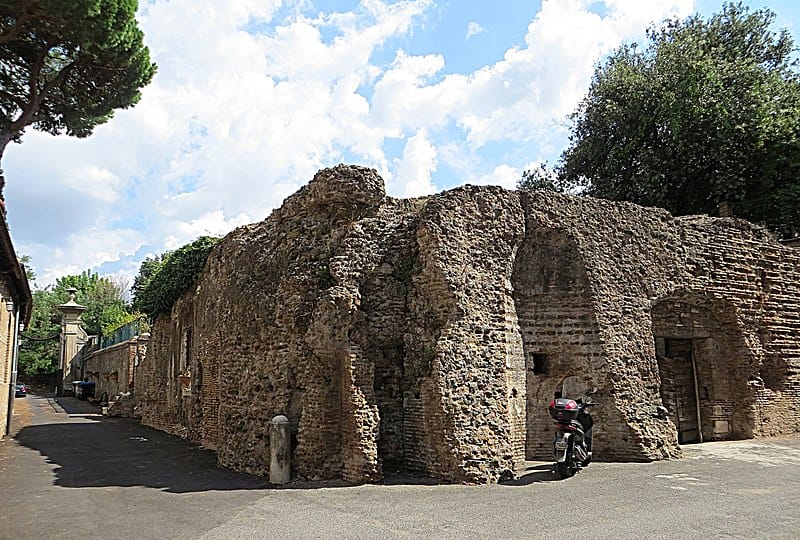
Source: Mister No, CC BY 3.0 https://creativecommons.org/licenses/by/3.0, via Wikimedia Commons
Traveler Tip: Many visitors emphasize the importance of taking a guided tour to fully appreciate the historical and religious significance of the catacombs. The spooky atmosphere, combined with the rich history, makes it an unforgettable experience.
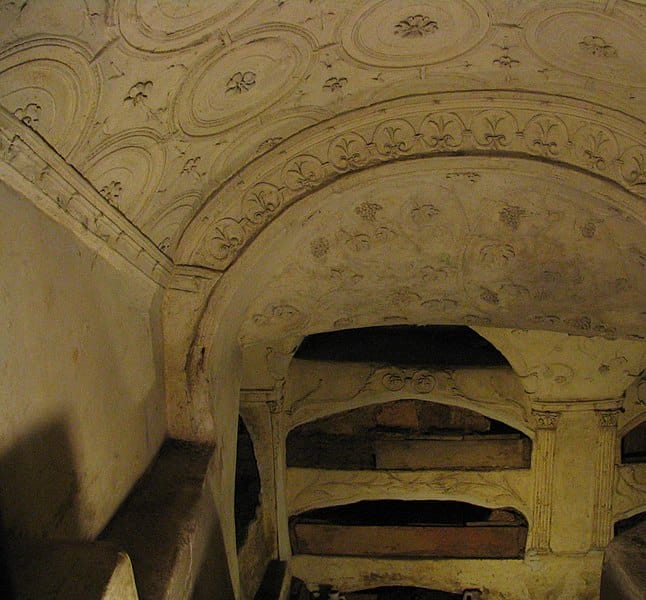
Source: Patrick Denker on Flickr, CC BY 2.0 https://creativecommons.org/licenses/by/2.0, via Wikimedia Commons
The Church of Domine Quo Vadis
Further along the Appian Way, you’ll come across the quaint Church of Domine Quo Vadis. According to Christian tradition, this is the site where Saint Peter, fleeing persecution in Rome, encountered a vision of Christ. The church’s name, which translates to “Lord, where are you going?” is derived from this encounter. Inside the church, you’ll find a stone with what is believed to be the footprints of Christ, making it a site of pilgrimage for many believers.
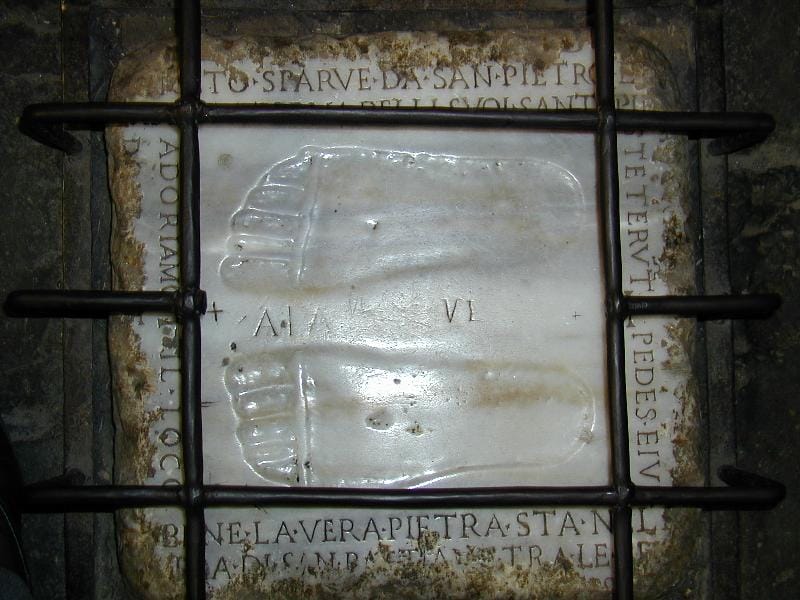
Traveler Experience: A peaceful retreat that offers a moment of reflection amid the historic journey. The church’s modest size and quiet atmosphere make it a favorite among those seeking a more modest, spiritual experience.
The Villa of the Quintilii
The Villa of the Quintilii is one of the largest and most luxurious villas in the Roman countryside, offering a fascinating insight into the rich lifestyle of Rome’s elite. This sprawling estate, dating back to the 2nd century AD, was once owned by the Quintilii brothers, who were wealthy senators. The villa is renowned for its grand architecture, intricate mosaics, and thermal baths.
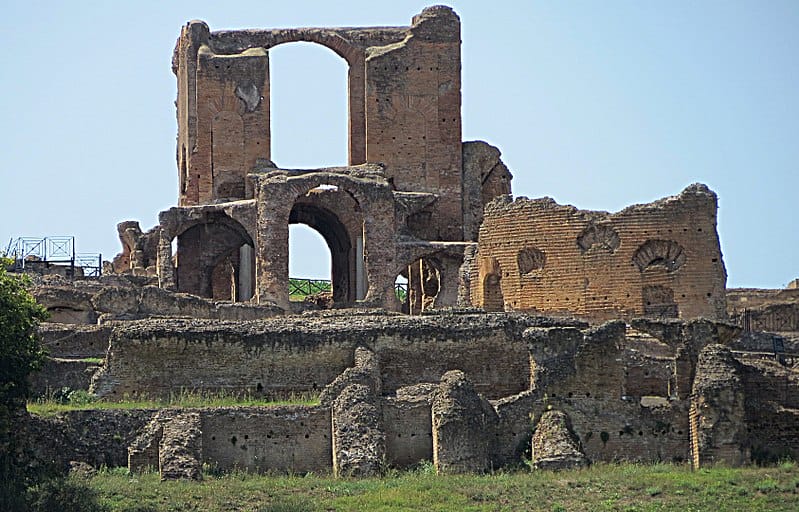
Source: Radosław Botev, CC BY 3.0 PL https://creativecommons.org/licenses/by/3.0/pl/deed.en, via Wikimedia Commons
Traveler Tip: The villa’s extensive grounds are perfect for leisurely exploration. Visitors recommend bringing a picnic and spending the afternoon among the ruins, soaking in the atmosphere of ancient Rome.
The Circus of Maxentius
Just a short walk from the Villa of the Quintilii lies the Circus of Maxentius, one of the best-preserved Roman circuses outside of Rome. Built in the 4th century AD by Emperor Maxentius, the circus was primarily used for chariot racing. Although less famous than the Circus Maximus, it offers a more intimate experience, with well-preserved ruins and fewer crowds.
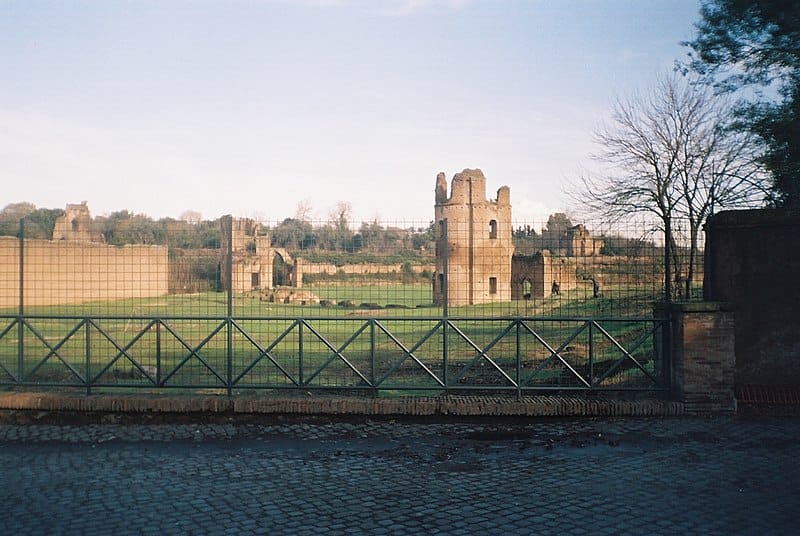
Source: Radosław Botev, CC BY 3.0 PL https://creativecommons.org/licenses/by/3.0/pl/deed.en, via Wikimedia Commons
Traveler Experience: Visitors highlight the peacefulness of the site, which contrasts sharply with the chaos of Rome’s city center. The Circus of Maxentius is a hidden gem, often described as one of the most underrated attractions along the Appian Way.
The Mausoleum of Romulus
Close to the Circus of Maxentius is the Mausoleum of Romulus, built in honor of Emperor Maxentius’s son, Valerius Romulus. The mausoleum, with its impressive circular design, is a sad reminder of the personal tragedies that befell Rome’s rulers. Although the interior is not accessible, the mausoleum’s exterior is well-preserved and offers a striking silhouette against the Roman sky.
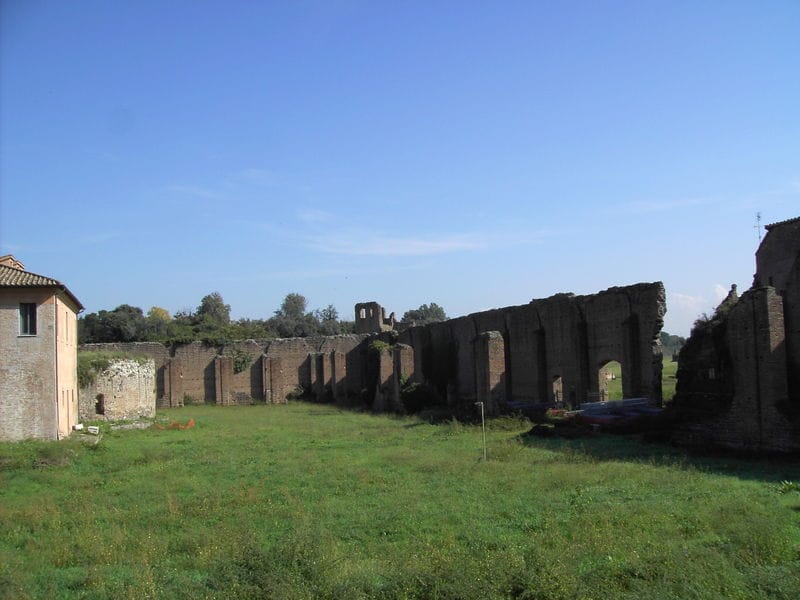
Traveler Tip: Many travelers suggest visiting the mausoleum at sunset, when the golden light casts a magical glow over the ancient stones, creating a perfect photo opportunity.
Embracing Nature Along the Appian Way
One of the most enchanting aspects of the Appian Way is its natural beauty. The road winds through the Roman countryside, offering stunning views of rolling hills, ancient pine trees, and fields dotted with wildflowers. The great blend of nature and history creates a unique atmosphere that captivates all who visit. The peacefulness of the countryside, combined with the sense of walking in the footsteps of history, makes the Appian Way a favorite destination for those seeking tranquility and reflection.
Practical Tips for Exploring the Appian Way
1. Getting There
The Appian Way is easily accessible from Rome’s city center. One can reach the starting point, Porta San Sebastiano, by bus or taxi. Many visitors recommend renting a bike to explore the road at a leisurely pace, allowing you to cover more ground while still enjoying the scenery.
2. When to Visit
The Appian Way can be visited year-round, but spring and autumn are particularly popular due to the milder weather. If you prefer a quieter experience, consider visiting during the weekdays, as weekends can be busier with both locals and tourists.
3. Guided Tours
While the Appian Way can be explored independently, many travelers recommend taking a guided tour to fully appreciate the historical and cultural significance of the sites along the road. Guided tours often include access to areas that are not open to the general public, offering a more in-depth experience.
A Living Monument to Rome’s Enduring Legacy
The Appian Way is more than just an ancient road; it is a living monument to Rome’s enduring legacy. As you walk along its cobblestones, you are treading in the footsteps of emperors, saints, and soldiers, all of whom have left their mark on this remarkable pathway. The collision of culture, history, and nature along the Appian Way creates an experience that is both educational and deeply moving.
Whether you’re a history buff, a nature lover, or simply seeking a unique adventure, the Appian Way offers something for everyone. Its timeless beauty and rich heritage continue to inspire all who venture along its storied path, making it a must-visit destination for anyone traveling to Rome.
So, lace up your walking shoes, grab your camera, and set out on a journey through time on the Appian Way—a place where the past comes alive, and the echoes of history linger in every step.
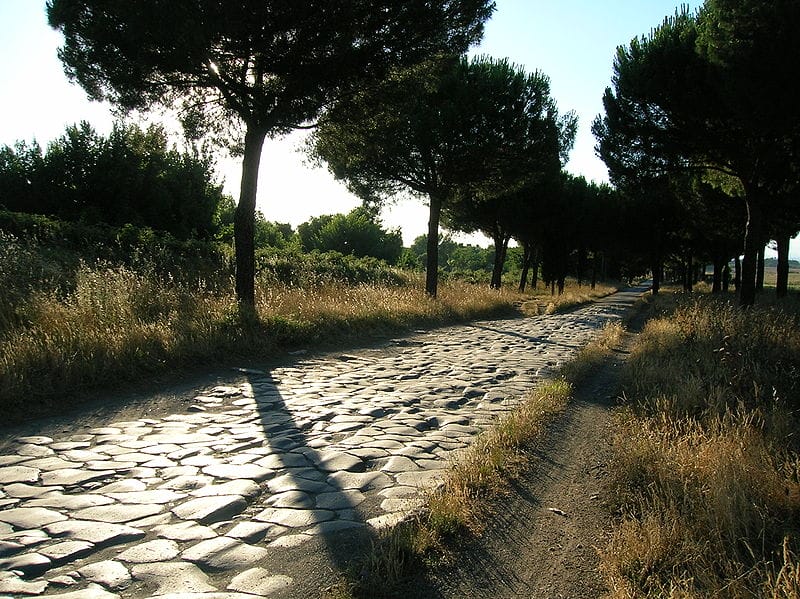
People Also Ask:
Is the Appian Way worth visiting?
The Appian Way is a key connection of Brindisi to Rome that has endured for thousands of years. The Appian Way is one of the ancient world’s historic and longest connections. It is likely to be created as a UNESCO World Heritage List that connects Rome with the south of Italy, which has existed for thousands of years.
What are the highlights of the Appian Way?
Visitors can explore the underground burial chambers and see the ancient artwork and inscriptions that decorate the walls. Some of the most notable catacombs along the Appian Way include the Catacombs of San Callisto, San Sebastiano, and Domitilla.
What is the best way to see the Via Appia?
The best way to see the Via Appia is by bike. Cycling is the best way to experience the Via Appia Antica. Not only does it give you a better chance of reaching the end, near Ciampino airport, but it also gives you the freedom to pull up and explore the various villas and catacombs that line the ancient highway.
Where to start on Appian Way?
Where is the Appian Way located in Rome? The starting point for a visit to Via Appia is the Porta San Sebastiano. From here you travel further and further from the center of Rome.
Why is the Appian way so famous?
The Appian Way was a Roman road used as a main route for military supplies for its conquest of southern Italy in 312 BC and for improvements in communication. The Appian Way was the first long road built specifically to transport troops outside the smaller region of greater Rome (this was essential to the Romans).
What is the best catacomb to visit in Rome?
The Catacomb of San Callisto is the oldest and best preserved of the cemetery complexes on the Appian Way. Dating back to the 2nd century AD, the catacombs served as the final resting place for numerous prominent early Christians, and its tunnels and galleries extend over 20 kilometers and multiple levels.
Hello, my name is Vladimir, and I am a part of the Roman-empire writing team.
I am a historian, and history is an integral part of my life.
To be honest, while I was in school, I didn’t like history so how did I end up studying it? Well, for that, I have to thank history-based strategy PC games. Thank you so much, Europa Universalis IV, and thank you, Medieval Total War.
Since games made me fall in love with history, I completed bachelor studies at Filozofski Fakultet Niš, a part of the University of Niš. My bachelor’s thesis was about Julis Caesar. Soon, I completed my master’s studies at the same university.
For years now, I have been working as a teacher in a local elementary school, but my passion for writing isn’t fulfilled, so I decided to pursue that ambition online. There were a few gigs, but most of them were not history-related.
Then I stumbled upon roman-empire.com, and now I am a part of something bigger. No, I am not a part of the ancient Roman Empire but of a creative writing team where I have the freedom to write about whatever I want. Yes, even about Star Wars. Stay tuned for that.
Anyway, I am better at writing about Rome than writing about me. But if you would like to contact me for any reason, you can do it at contact@roman-empire.net. Except for negative reviews, of course. 😀
Kind regards,
Vladimir
